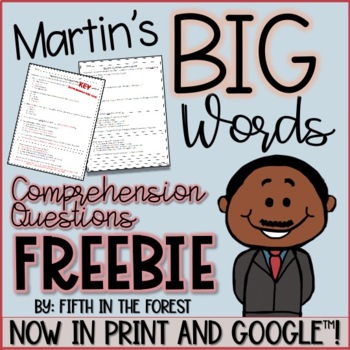Martin's Big Words Comprehension Questions FREEBIE for Upper Elementary
- PDF
- Google Apps™

Description
This product is a FREE SAMPLE from my full day of plans for Martin's Big Words by Doreen Rappaport. The full plans include an activity for reading, writing, math, science, social studies, and a craft! See that version here!
Update January 2021: This product can now be used digitally with Google Slides™! You must have a Google Classroom™ account to use this feature. You will download a PDF with links and directions for assigning this to your class. All activities remain the same.
How does this work?
Your download will come with a full page of comprehension questions appropriate for upper elementary. It also includes an answer key.
****************************************************************************************************************************************************
Looking for more FULL DAY of lesson plans? Check out these titles below!
Mercedes and the Chocolate Pilot
Thank You, Sarah (Thanksgiving themed!)
Molly's Pilgrim (Thanksgiving themed!)





